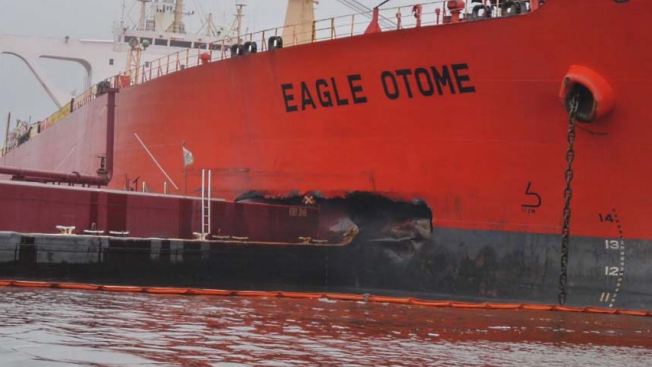Coast Guard VTS Centers Get Thorough Review

The U.S. National Transportation Safety Board completed a review of the Coast Guard's Vessel Traffic Service (VTS) operations Tuesday with a list of areas for improvement, from training to administration to communications.
The primary problem the NTSB noted was an absence of consistency across the nation’s 12 VTS centers. "This study found widespread variation in the understanding of Coast Guard VTS authority . . . across the VTS system, which has resulted in the inconsistent application of that authority over time," the agency said. "Moreover, the Coast Guard’s training and qualification process for its watch supervisors and operators has not ensured a consistent understanding . . . and this problem has been exacerbated by the regular turnover of active duty personnel."
The agency did not discuss the reasons behind the high turnover in its brief, but active duty Coast Guard members typically rotate through the service's shoreside or afloat units as they move up the ranks.
Further, the NTSB asserted that:
- The USCG is not using realistic and sufficient VTS simulation training.
- The quality of watchstander on-the-job training has been inconsistent.
- The Coast Guard does not require its watch supervisors to first work as VTS operators and a significant fraction have not, which may affect their ability to recognize and respond to developing traffic situations.
- As watchstanders receive inconsistent guidance about their responsibility to step in when a potentially dangerous traffic situation is developing, they may be reluctant to provide this service.
- Some watchstanders lack sufficient knowledge of navigation rules and regulations.
- The Coast Guard's current method of monitoring communications on the bridge-to-bridge radio frequency is inadequate to identify unsafe situations, particularly during periods of low visibility or high traffic volume.
- Cooperation between pilots and US Coast Guard VTS watchstanders is often adversely affected by a negative perception of VTS expertise. Some pilots surveyed as part of the review believe that VTS operators should not issue maneuvering orders.
“VTS personnel can spot hazardous traffic patterns early in their development. They provide information about unsafe situations . . . And, when necessary, they can and should provide navigational direction and monitor its effects,” said NTSB chairman Christopher A. Hart.
The NTSB called on the Coast Guard to improve on its VTS centers' performance with new procedures, training methods, guidelines and operational changes – including the possibility of hiring in experienced civilian mariners as part of each watch.
